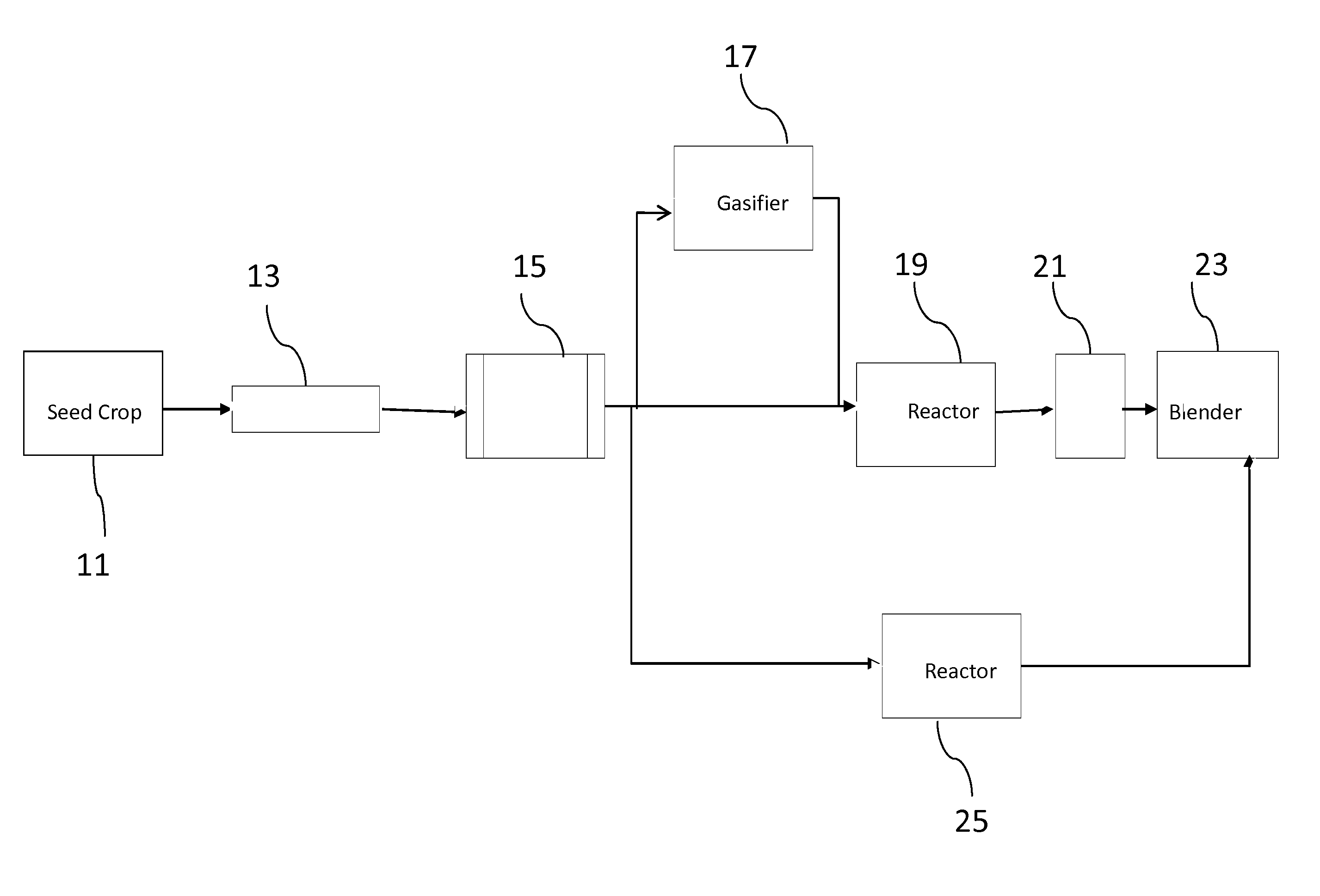Synthetic fluids and methods of manufacture
a technology of synthetic fluids and manufacturing methods, applied in the direction of hydrocarbon oil treatment products, sealing/packing, borehole/well accessories, etc., can solve the problems of difficult or impossible to obtain a favorable balance of all of these characteristics with current petroleum derived aviation fuels, difficult or impossible, and may persist in the environment for longer periods, etc., to achieve the effect of minimizing cracking, low cost and optimizing characteristics
- Summary
- Abstract
- Description
- Claims
- Application Information
AI Technical Summary
Benefits of technology
Problems solved by technology
Method used
Image
Examples
Embodiment Construction
[0009]The seed crops used to produce the novel synthetic fluids of the invention are genetically modified in such a way that the fatty acids in the TGFA's of the seeds are all of the single carbon chain length, preferably C12 or C14. In a preferred embodiment of the method of invention, the seed crop used to produce the TGFA's matures rapidly and can be temporally interspersed where the successive plantings of another crop, such as a food crop. Both genetically modified camelina and cranbee are rapidly growing seed crops that can be excellent sources of TGFA's in the desired carbon chain lengths. Advantageously, they can be produced in rotation with traditional food crops, such as wheat, to maximize the CO2 consumption rate of a given acre of land. Moreover, they enhance the productivity of the food crop cycle by increasing the permeability and CO2 adsorption properties of the soil, and, at least in the case of camelina, improving the soil, such that the productivity of the followin...
PUM
| Property | Measurement | Unit |
|---|---|---|
| pressure | aaaaa | aaaaa |
| pressure | aaaaa | aaaaa |
| pressure | aaaaa | aaaaa |
Abstract
Description
Claims
Application Information
 Login to View More
Login to View More - R&D
- Intellectual Property
- Life Sciences
- Materials
- Tech Scout
- Unparalleled Data Quality
- Higher Quality Content
- 60% Fewer Hallucinations
Browse by: Latest US Patents, China's latest patents, Technical Efficacy Thesaurus, Application Domain, Technology Topic, Popular Technical Reports.
© 2025 PatSnap. All rights reserved.Legal|Privacy policy|Modern Slavery Act Transparency Statement|Sitemap|About US| Contact US: help@patsnap.com


